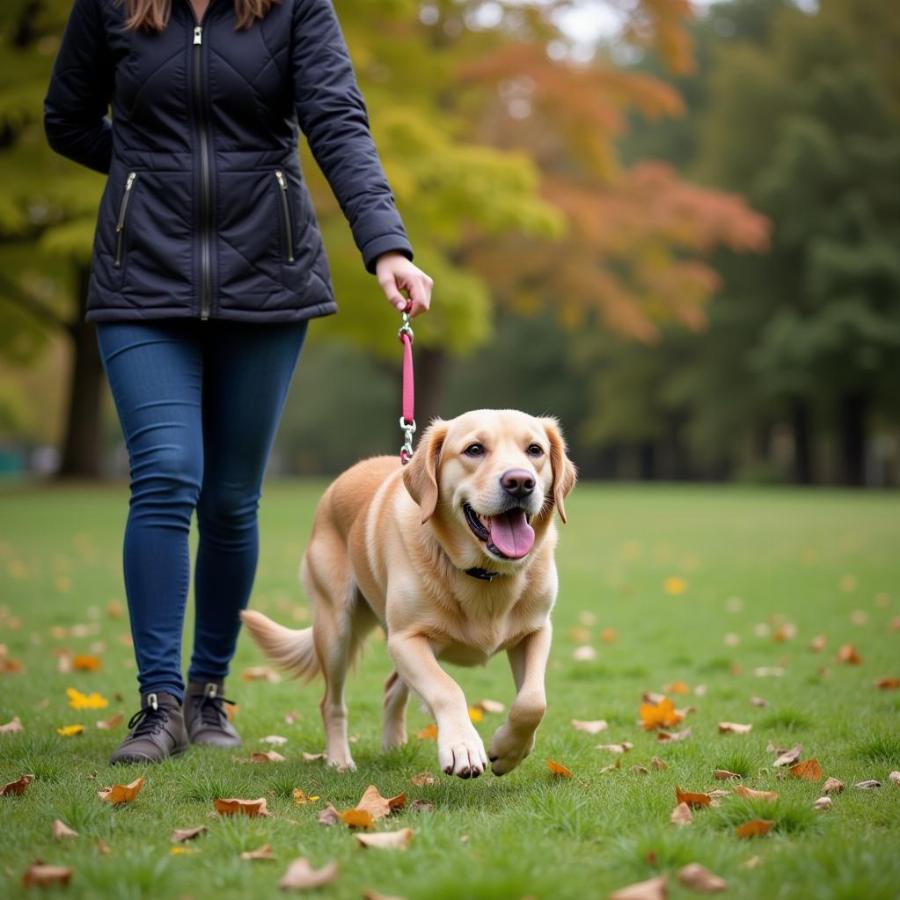Dogs mating season is a crucial aspect of dog ownership, especially for breeders and those who have intact (not spayed or neutered) dogs. Understanding this natural process can help you manage your dog’s behavior, prevent unwanted pregnancies, and ensure the health and well-being of your furry friend. Knowing the signs, cycles, and responsible practices associated with dogs mating season will empower you to navigate this period with confidence.
Decoding the Canine Heat Cycle: Signs and Stages
When we talk about dogs mating season, we’re referring to the estrus cycle, commonly known as “being in heat.” This cycle marks the time when a female dog is receptive to mating and can become pregnant. Recognizing the signs of the different stages is essential for responsible pet ownership. The canine heat cycle typically lasts for several weeks and is divided into four main stages: proestrus, estrus, diestrus, and anestrus.
-
Proestrus: This initial stage, lasting around 9 days, is marked by swelling of the vulva and bloody discharge. While males may be attracted to females in this stage, the female is not yet receptive.
-
Estrus: This is the actual “heat” period, lasting 4-13 days, where the female is receptive to mating. The discharge becomes lighter, often straw-colored, and the vulva softens. This is the fertile period.
-
Diestrus: This post-estrus phase lasts around 60-90 days, even if pregnancy doesn’t occur. The discharge ceases, and the vulva returns to normal size. Hormonal changes continue.
-
Anestrus: This is the reproductive rest period, lasting several months, before the cycle begins anew.
Managing Your Dog During Mating Season
Managing your dog during her heat cycle requires careful planning and attention. Keep her confined, either indoors or in a securely fenced area, to prevent unwanted mating and escape attempts. Be vigilant during walks, using a leash and avoiding areas frequented by male dogs. Increased attention and affection can help soothe your dog’s anxieties during this time.  Quản lý chó cái trong mùa sinh sản
Quản lý chó cái trong mùa sinh sản
How Often Do Dogs Go Into Heat?
Typically, dogs go into heat twice a year, approximately every six months. However, this can vary depending on breed and individual dog. Smaller breeds may cycle more frequently, while larger breeds may cycle less often.
What Are the Signs My Dog is Ready to Mate?
The clearest sign is the change in vulvar discharge from bloody to straw-colored during estrus. Other signs include a softened vulva, increased urination, tail flagging (holding the tail to the side), and increased interest from male dogs.
Responsible Breeding and Spaying/Neutering
If you’re not a responsible breeder, spaying or neutering your dog is the best course of action. These procedures not only prevent unwanted pregnancies but also offer significant health benefits, reducing the risk of certain cancers and behavioral issues. do foxes eat dogs
Dr. Emily Carter, DVM, a renowned veterinary specialist in canine reproduction, emphasizes, “Spaying or neutering is a vital aspect of responsible pet ownership. It contributes significantly to controlling the pet population and preventing health problems in your furry companion.”
Conclusion
Understanding dogs mating season is crucial for responsible dog ownership. By recognizing the signs of the heat cycle, managing your dog’s behavior, and considering spaying/neutering, you can ensure a healthy and happy life for your beloved pet. Remember, responsible pet ownership involves understanding and addressing your dog’s reproductive needs.
FAQ
- How long does a dog’s mating season last? The entire cycle can last several weeks, with the receptive period (estrus) lasting 4-13 days.
- Can I bathe my dog during her heat cycle? Yes, bathing your dog will not interfere with her cycle.
- How can I prevent unwanted pregnancies? Keep your female dog confined and away from male dogs during her heat cycle. Spaying is the most effective preventative measure.
- At what age do dogs typically go into heat for the first time? Most dogs experience their first heat cycle between 6 and 12 months of age.
- Is there a way to predict when my dog will go into heat? While there’s no foolproof method, tracking previous cycles can give you a general idea.
- What are the risks of not spaying or neutering my dog? Unspayed females are at risk for pyometra (a uterine infection) and mammary cancer. Unneutered males are more prone to testicular cancer and certain behavioral issues. dogs and road trips
- How can I make my dog more comfortable during her heat cycle? Extra attention, gentle petting, and a comforting environment can help.
Beaut Dogs is your trusted resource for comprehensive information on all aspects of dog ownership. We are dedicated to providing you with reliable and valuable insights into the world of canines, from choosing the right breed to providing complete care guides. Visit Beaut Dogs today! When you need further assistance, don’t hesitate to contact our support team via Email: [email protected] for detailed and accurate answers from Beaut Dogs.